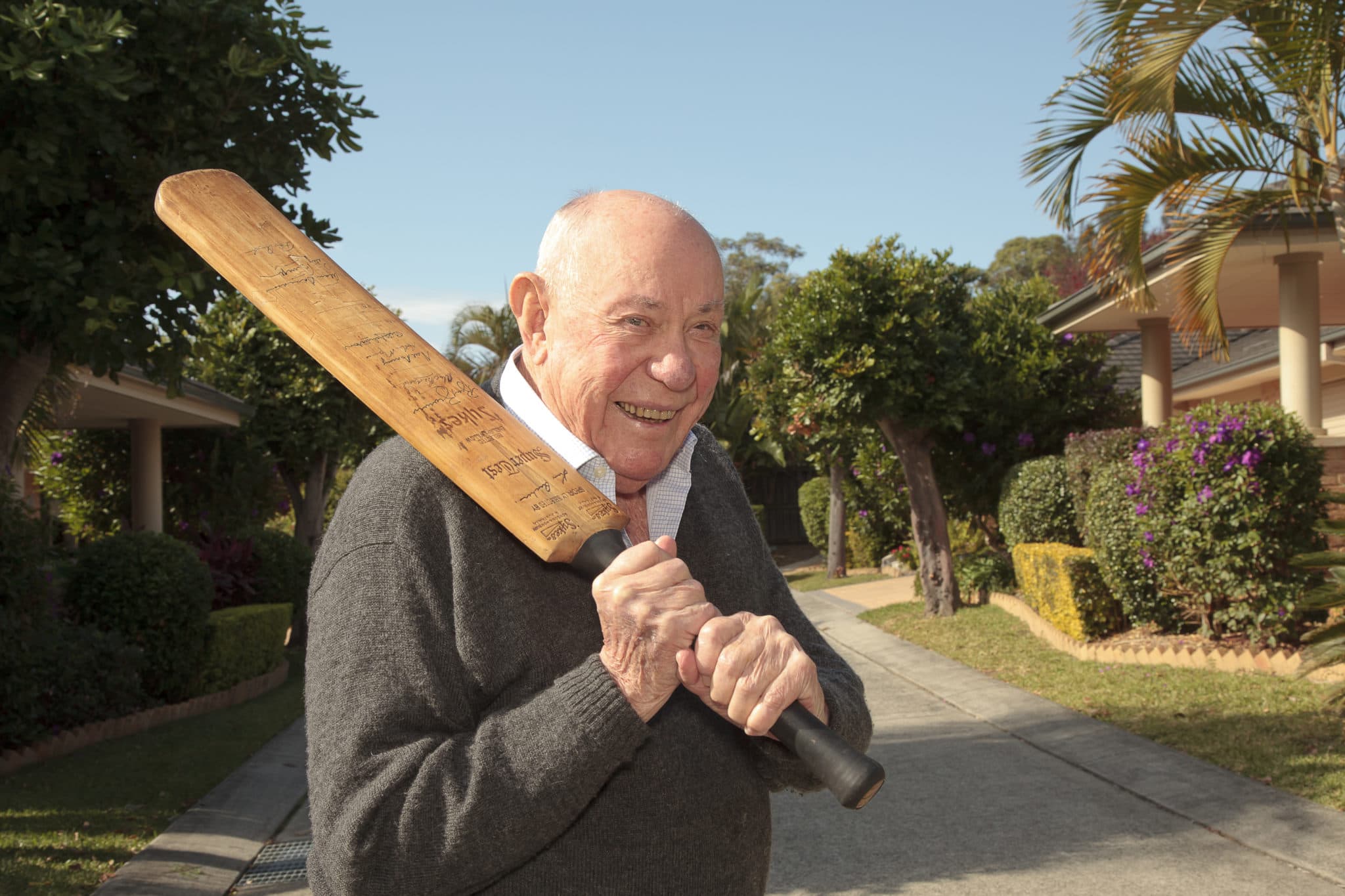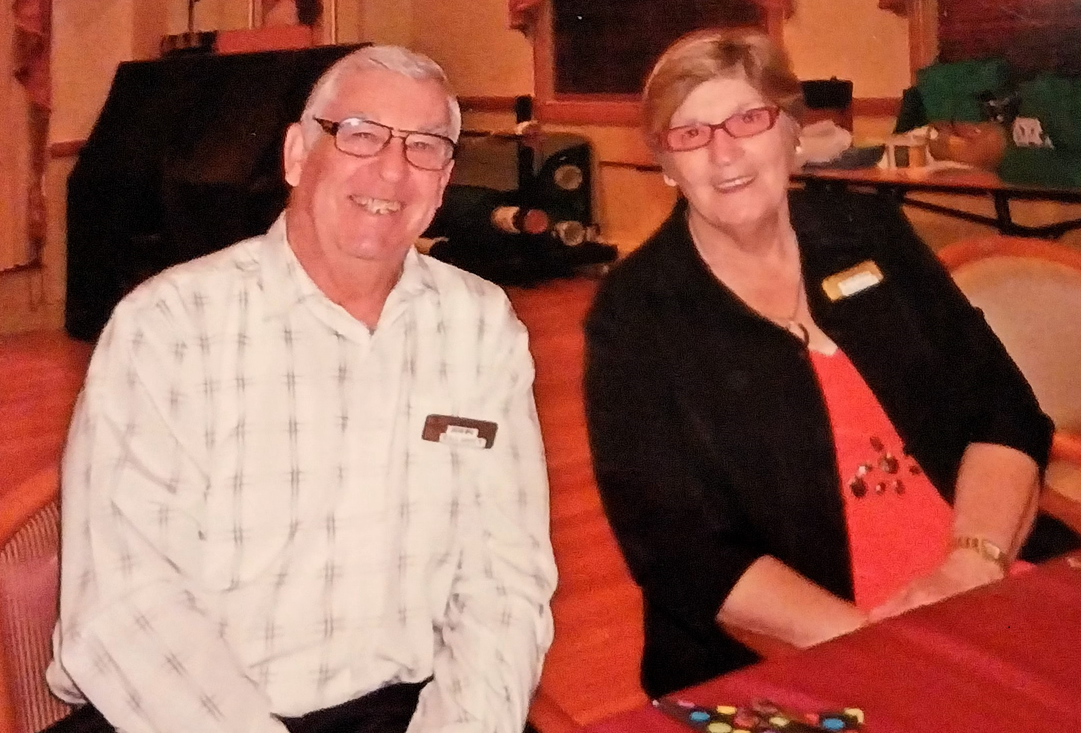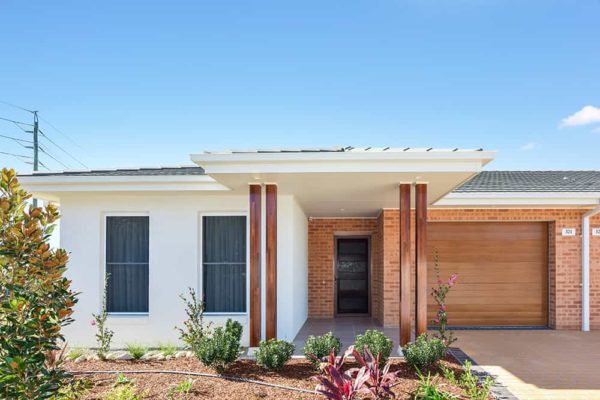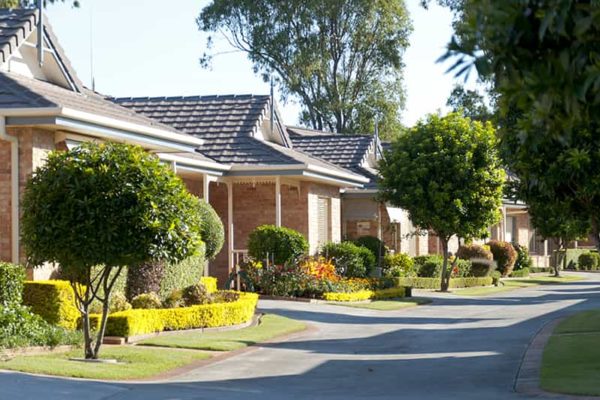Queensland and New South Wales have a long-standing sporting rivalry, but at Wood Glen Retirement Village on the Central Coast, a prominent Queensland sporting figure has made a home.

Ken Archer, Australia’s oldest living test cricketer, has been at the village since 2003, and while he fondly remembers his days representing both his country and home state, he is now comfortably nestled south of the border.
Born in Brisbane in 1928, Ken grew up in Yeerongpilly and studied science at the University of Queensland, whose cricket team he was selected to play for by future Brisbane mayor Clem Jones.
During his first year at university, he represented Queensland against a touring English team led by Wally Hammond.
“In that era cricket was virtually an amateur sport,” Ken said.
“So I found employment as a youthful Science Master at Anglican Church Grammar School in Brisbane, which, with summer school holidays plus a few days leave in November and February, enabled me to play first-class cricket in Australia.”
Luckily, his school headmaster was a big cricket fan and granted him a six-month leave of absence to fulfill international duties on Australia’s 1949-50 tour of South Africa.
“I was 12th man for the five test matches in South Africa and again for the first test against England the following summer,” he said.
“Six times in a row was a world record, or so some statistically-warped fan informed me. I played the next three tests, but was dropped from the fifth and final test. I mention, purely in passing, that this became the first test match Australia lost since 1938!”
A strong right-handed batter and outstanding fielder, Ken played in another two tests against the West Indies, but never played for Australia again. Captaining Queensland for several more years kept him involved in the game.
Early in the 1950s, when he was representing Queensland in the national baseball competition, Ken received an offer from the St. Louis Browns – the American Major League Baseball franchise that later became the Baltimore Orioles.
“It was potentially a financially rewarding proposition but I declined,” he said.
“I have great admiration for those who spend a lifetime honing a particular skill, but I’ve always needed broader stimulation than professional sport offered.”
Nevertheless, Ken then found himself in England’s Lancashire League, where cricket clubs were busy recruiting overseas players in the post-war decade.
“I was fortunately able to arrange a one-season contract with Accrington Cricket Club,” he said.
“They seemed happy with my contribution because they tried very hard to get me to sign on for another few years.”
After returning to Brisbane and accepting an offer of employment with radio station 4BC, Ken was involved in an interesting and challenging period of transition for radio, as television was rapidly becoming the broadcast medium of choice for most Australians. He quickly rose through the ranks.
“In 1972, I moved to Sydney to become the CEO of the group of stations of which 4BC was a member,” he said.
“I served on the Commercial Radio Industry’s executive or as President throughout the 1970s.”
Ken was also involved with the Primary Club of Australia, from its foundation in 1974. He is proud that the cricket-based charity, which provides sporting, recreational and rehabilitation facilities to the disabled and disadvantaged, is still going strong today.
Perhaps Ken’s greatest honour came unexpectedly in 1980, just as he was retiring from his broadcasting role after 26 years service.
“I was surprised, but pleased, to be made a Member of the Order of Australia for services to the media,” he said.
Further to this, Ken was later awarded the prestigious Australian Sports Medal for his sporting contributions.
“I remain interested in cricket, although the game has changed dramatically in many ways since I stopped playing 60 years ago,” he said.
“I enjoyed watching the recent test series against India, which produced four interesting matches.”
After deciding to downsize and move to a retirement village, Ken and his wife bought a villa off the plan at Wood Glen.
“Marion and I have both enjoyed our many years in Wood Glen,” he said.
“We found our various ways of making (hopefully positive) contributions to the village community – especially in the formative years of the village. I’m very appreciative of the friendship and support of many fellow residents and the excellent facilities which this village offers.”
For more information about Wood Glen Retirement Village, click here






